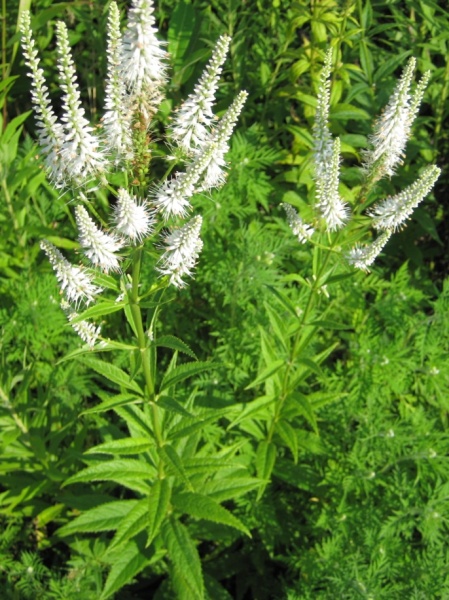[1] British Herbal Pharmacopoeia 1983 Published by the British Herbal Medicine
Association ISBN 0 903032 07 4.
[2] Herbal Materia Medica Course Notes For Diploma of Naturopathy and Diploma
of Herbalism Students by Lydia Mottram.
[3]
Potter's New Cyclopaedia of Botanical Drugs and Preparations
R.C. Wren Revised by Elizabeth M. Williamson and Fred J Evans. First published
in Great Britain in 1988 and reprinted in 1989 and 1994 by the C. W. Daniel Company
Limited. 1 Church Path, Saffron Walden Essex. Published 1988 Printed and bound
by Biddles, Guildford ISBN 085207 1973.
Images
1.
en.wikipedia.org
by Crazytwoknobs CC BY 3.0
 Veronicastrum
virginicum.
Culver's root,
Black root, Physic root, Leptandra
Family: Scrophulariaceae
Veronicastrum
virginicum.
Culver's root,
Black root, Physic root, Leptandra
Family: Scrophulariaceae